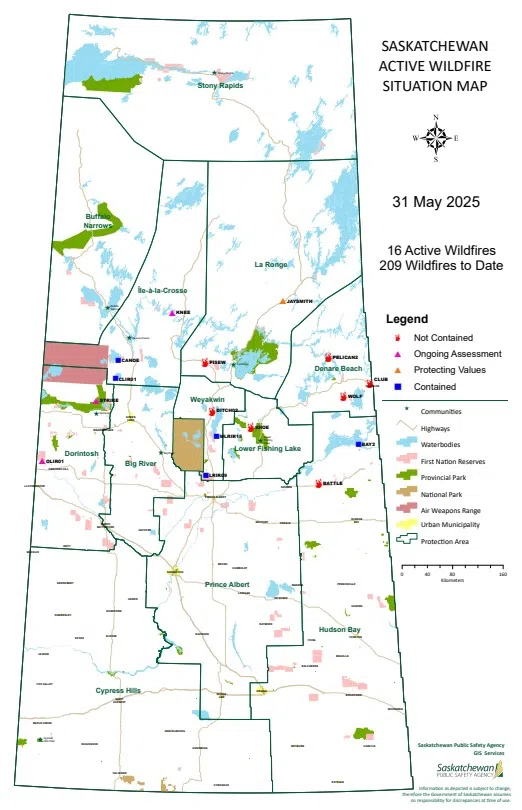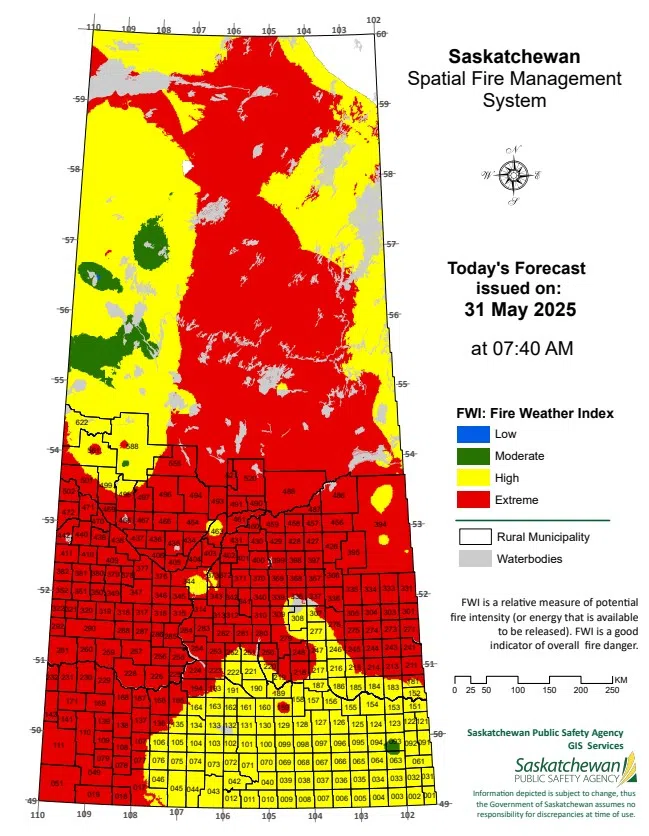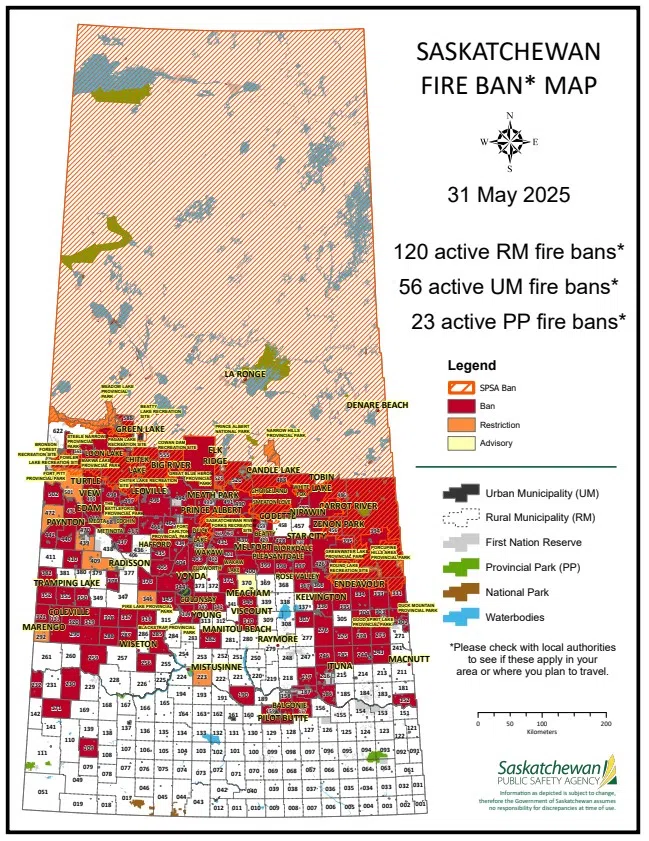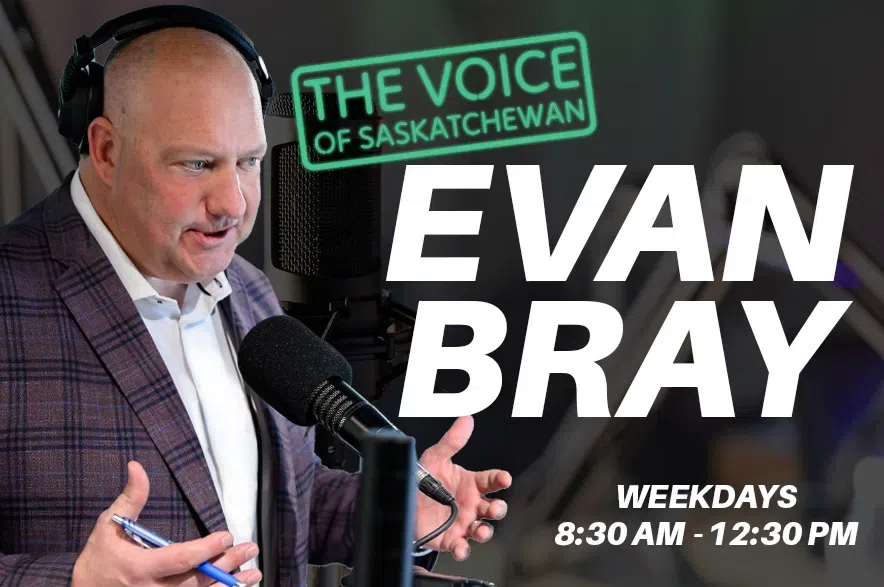The Saskatchewan Public Safety Agency (SPSA) and Premier Scott Moe anticipate the number of wildfire evacuees in the province to rise over the next week.
“I do fear, with the weather that we are seeing in the next four to seven days, that we are going to have more people evacuated in the next number of days, as opposed to less,” Moe said when speaking to media on Saturday.
One positive note mentioned by Moe is that no loss of life has been reported.
Read more:
- Community leaders welcome Scott Moe’s appeal for more firefighters
- Donations drive begun, Métis Nation Sask. declares wildfire state of emergency
- Housing Sask. wildfire evacuees becomes more and more challenging
Earlier on Saturday, Peter Ballantyne Cree Nation (PBCN) declared a state of emergency for the community of Sturgeon Landing.
A mandatory evacuation order was put in place. Evacuees were transported to the University of Regina, where accommodations and support services will be provided.
PBCN Chief Peter Beatty said that finding space for evacuees has been a challenge.
“We have a lot of people out there, not only from Peter Ballantyne, but from other First Nations as well, communities, (trying to find space),” he said.
“Also pre-existing events are displacing our evacuees in the urban centers.”
Beatty said he’s working closely with Prince Albert, Saskatoon and the Federation of Sovereign Indigenous Nations (FSIN) to find accommodations for the evacuees and displaced people.
Some temporary spaces have been made available, but Beatty said this is not a good option.
“We will continue to work towards more stable accommodations, and hopefully this is not going to stretch into weeks,” he said.
Moe agrees that short-term stays are not ideal.
“They are using some congregate emergency shelters in a few of their … communities to support those for short-term stays,” Moe said.
“That is not the goal but we may, unfortunately, get to that point for a short period of time.”
Moe said the province is doing all it can to support every evacuee, with the help of Red Cross, provincial and municipal supports and other agencies.
“However, they (resources) are going to become increasingly tight in the days ahead,” he said. “It’s going to be an all hands on deck, using every available resource that we have.”
Province hasn’t called on federal help
Saskatchewan is currently under a provincial state of emergency due to the wildfires, which means the province can access more resources and call for support from different levels of the government.
When asked why Saskatchewan hasn’t asked the federal government for help when Manitoba has, Moe explained on Saturday it’s not about the number of fires or how big they are, it’s about impacted community members and extreme situations.
“By acres, (the fires in Manitoba) are smaller, but by people impacted in Manitoba, it’s about double the size. I think they’re well over 17,000 that have been evacuated. We’re over 8,000,” he explained.
Moe also said it would take an extreme situation like being unable to access a community for the call to be made to the feds.
“What we saw in Manitoba was an instance where that access was not available for some reason or another. We haven’t ran into that directly,” he said.
But if the province were to get into that situation, the call would be made, he said.
Buckley Belanger, Saskatchewan’s sole Liberal MP who was recently appointed as secretary of state for rural development, said the federal government is ready to help.
Fires in Saskatchewan on May 31
As of 11 a.m. on Saturday, 16 active fires were burning in the province.
SPSA said in its daily report that seven of those blazes were not contained, while another three of the fires were under ongoing assessment and the status of one was protecting values.
Five fires were considered contained.
Contained means suppression action is taking place and the fire is not expected to grow in size, ongoing assessment means the fire is being monitored regularly to assess risk to values in the area and not contained means suppression action is taking place but the fire is expected to grow in size, according to SPSA. Protecting values means a fire is active and action is focused on protecting things like cabins and infrastructure.
As well, fire bans are active in 56 urban municipalities, 120 rural municipalities and 23 provincial parks in the province, with the fire danger considered extreme over much of the province.
SPSA says there have been 211 fires in Saskatchewan so far in 2025. The five-year average to date for Saskatchewan wildfires is 128.
In Candle Lake, the on-going fire break project is nearly complete, according to Prince Albert Carlton MLA Eric Schmalz. He said 13 dozers are working to get the job done quickly.
Other resources working on the fire include: 220 provincial wildland firefighters on the ground, 13 municipal fire departments in communities, 66 contractors with heavy equipment, more than 100 coordinating staff, 12 Sask. air tankers, 410 Type 2 northern community Indigenous firefighters and 20-30 helicopters from Yukon, Quebec, Oregon, Arizona, Alaska and B.C.
Crews from B.C. will be coming down in the next few weeks, according to the SPSA.














